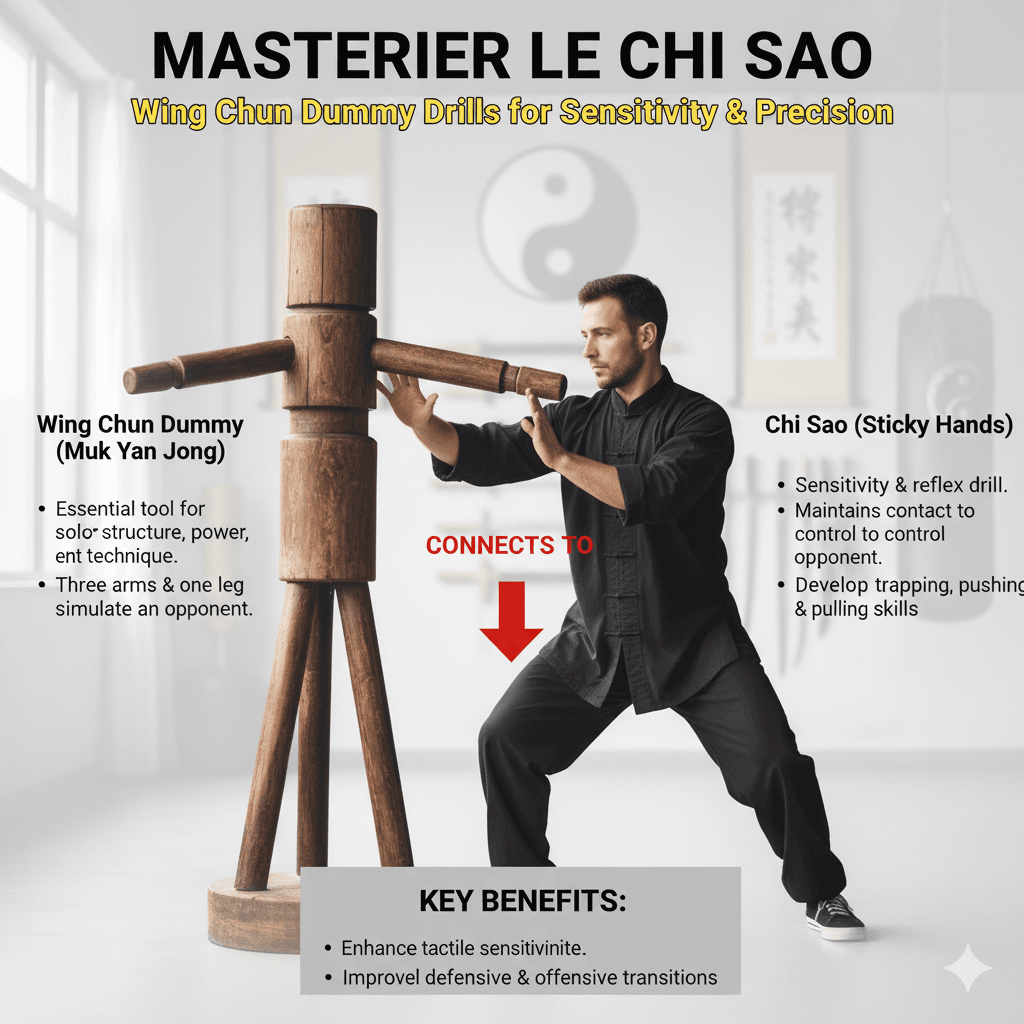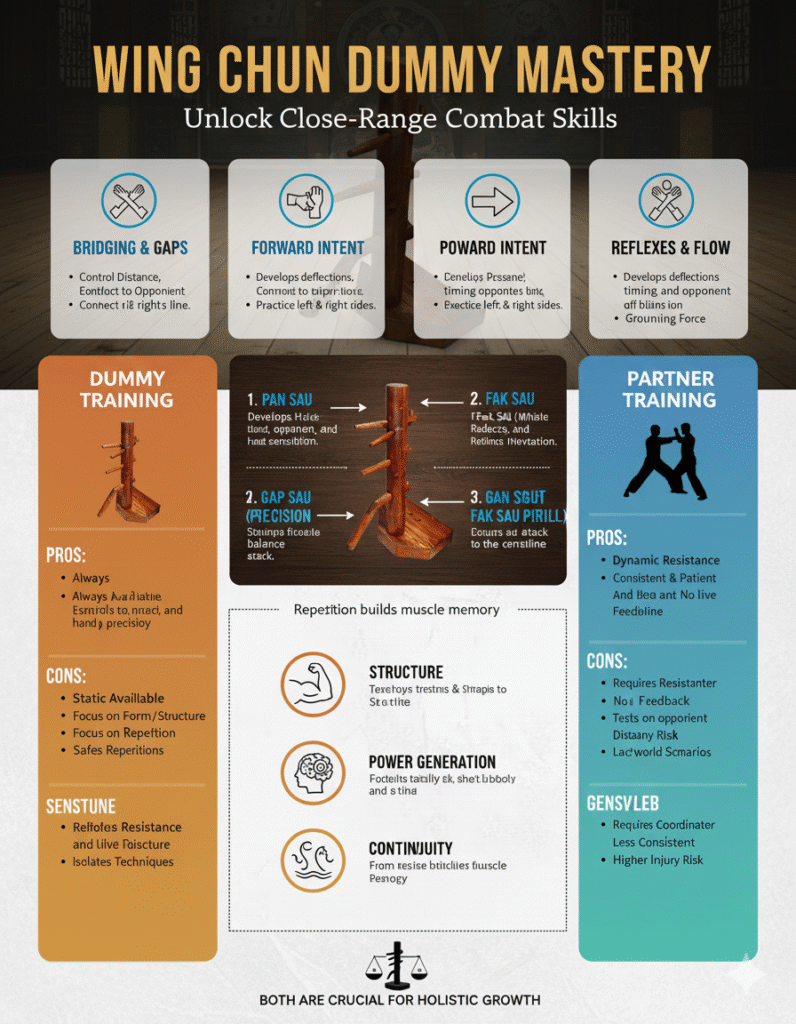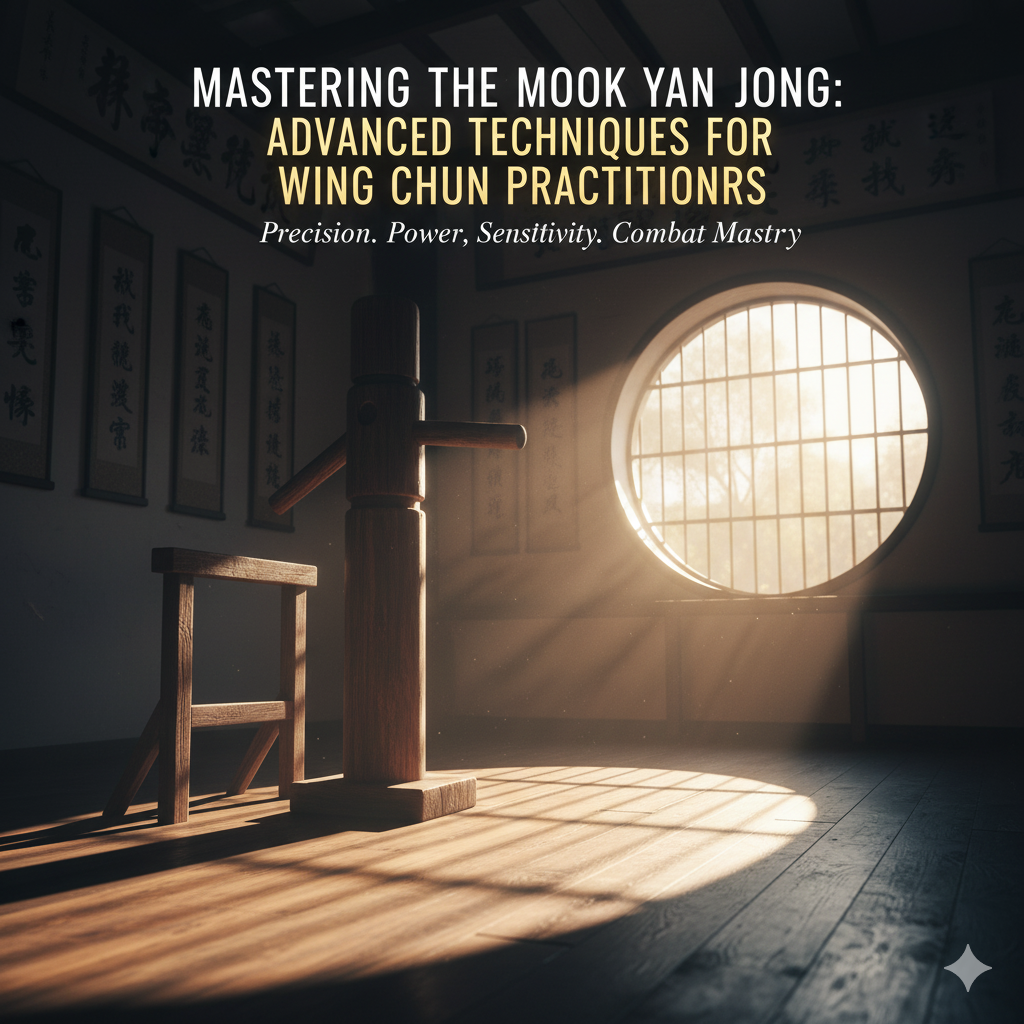Wing Chun, a martial art celebrated for its directness and efficiency, places immense value on close-range combat and tactile sensitivity.
At the heart of developing these crucial skills lies
Chi Sao, or “sticky hands,” a unique training method that fosters an intuitive connection with an opponent.
While partner training is paramount for Chi Sao, the Wing Chun dummy, or `Muk Yan Jong`, stands as an indispensable tool in refining these intricate techniques.
If you’re looking to deepen your understanding and proficiency in sticky hands, integrating the Wing Chun dummy into your routine is a game-changer.
What Exactly is Chi Sao (Sticky Hands)?

Chi Sao is more than just a drill; it’s a dynamic, flowing practice designed to cultivate sensitivity, reflexes, and adaptability in close-quarters combat [1].
It teaches practitioners to “listen” to an opponent’s energy through continuous contact, allowing for instantaneous reactions and adjustments.
The goal is to maintain constant contact, feeling for openings, redirecting force, and controlling the opponent’s structure without relying on brute strength.
This practice builds a profound sense of touch and proprioception, essential for Wing Chun’s effectiveness.
The Wing Chun Dummy: Your Silent Chi Sao Partner

The Wing Chun dummy, with its three arms and one leg, is a sophisticated training apparatus that simulates an opponent’s limbs and torso.
While it can’t replicate the unpredictability of a human partner, it offers unique benefits for Chi Sao development:
1. Enhanced Sensitivity and Reaction
Engaging with the dummy’s arms forces you to develop tactile sensitivity.
As you press, pull, and rotate against its wooden limbs, you learn to feel the subtle changes in pressure and resistance.
This constant feedback hones your ability to react instinctively, a critical component of Chi Sao [2].
The dummy helps you internalize the principles of yielding and advancing, teaching your hands to “stick” and flow with minimal conscious thought.
2. Precision and Timing
The fixed positions of the dummy’s limbs demand precise execution of techniques.
Unlike a moving partner, the dummy offers consistent resistance, allowing you to repeatedly practice and refine your angles, distances, and timing.
This repetitive training builds muscle memory, ensuring that your Chi Sao movements are accurate and efficient when applied in a dynamic situation.

3. Structure and Body Mechanics
Training on the dummy reinforces proper Wing Chun structure and body mechanics.
You learn to maintain a strong, stable stance while applying force, ensuring that your movements are rooted and powerful.
The dummy helps you understand how to generate power from your core and transmit it through your limbs, rather than relying on isolated arm strength.
This structural integrity is vital for effective Chi Sao, allowing you to control an opponent’s center.
4. Footwork and Angles
Chi Sao is not just about the hands; it’s a full-body endeavor that heavily relies on agile footwork and strategic angling.
The dummy provides a stationary target around which you can practice various footwork drills.
Moving around the dummy, you learn to create advantageous angles, evade incoming force, and position yourself for optimal attack and defense.
This integration of footwork with hand techniques is crucial for fluid and effective sticky hands.
Key Chi Sao Drills to Practice on the Wing Chun Dummy
While the full complexity of Chi Sao requires a human partner, several drills on the Wing Chun dummy can significantly improve your sticky hands foundation:

Sensitivity Drills: Practice maintaining light, continuous contact with the dummy’s arms, feeling for any gaps or changes in pressure. Focus on yielding to its
imaginary force and redirecting it. This develops the tactile sensitivity crucial for Chi Sao [2].
Bong Sao and Fook Sao Drills: Practice deflecting incoming “attacks” from the dummy’s arms using Bong Sao (wing arm) and controlling its
imaginary force and redirecting it. This develops the tactile sensitivity crucial for Chi Sao [2].
Bong Sao and Fook Sao Drills: Practice deflecting incoming “attacks” from the dummy’s arms using Bong Sao (wing arm) and controlling its “limbs” with Fook Sao (bridging arm).
This helps build muscle memory for these essential Wing Chun techniques.
Pak Sao and Lap Sao Drills: Utilize the dummy to practice Pak Sao (slapping hand) to clear an opponent’s arm and Lap Sao (pulling hand) to control and unbalance.
These drills enhance your ability to create openings and maintain control.
Footwork Integration: Combine your hand techniques with precise footwork around the dummy.
Practice stepping, shifting, and turning to maintain optimal positioning and leverage, just as you would in a real Chi Sao exchange.
Integrating Dummy Training with Partner Chi Sao
While the Wing Chun dummy is an excellent tool for solo practice, it’s important to remember that it complements, rather than replaces, partner Chi Sao.
The dummy helps you ingrain fundamental movements, develop sensitivity, and refine your structure in a controlled environment.
When you transition to partner training, these ingrained habits will allow you to focus more on adapting to a live, unpredictable opponent.
Think of the dummy as a foundational training partner that prepares you for the nuances of human interaction.
It builds the raw skills, while partner Chi Sao teaches you how to apply those skills dynamically and intuitively against another person’s energy and intent.
Conclusion: Unlock Your Chi Sao Potential
The Wing Chun dummy is far more than just a piece of wood; it’s a sophisticated training apparatus that can profoundly enhance your Chi Sao abilities.
By diligently practicing sensitivity drills, refining techniques, and integrating footwork, you’ll develop a deeper understanding of sticky hands and unlock new levels of proficiency in Wing Chun.
Embrace the dummy as your silent, steadfast partner, and watch your Chi Sao evolve.
References
wing chun dummy for sticky hands (chi sao) training


